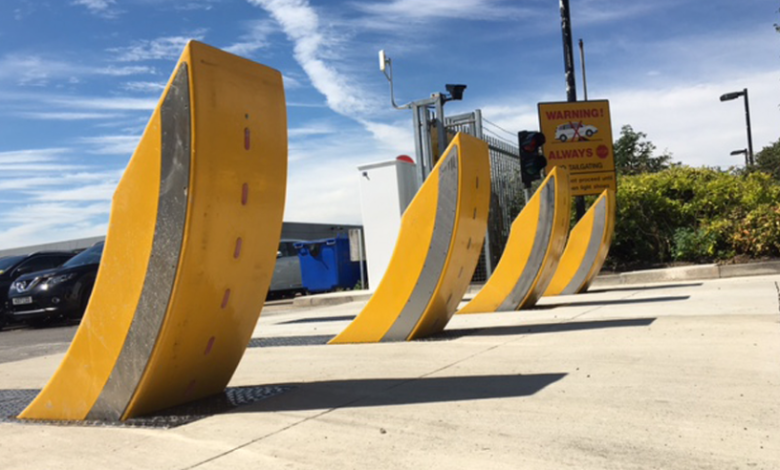The Role of PAS68 Standards in Preventing Hostile Vehicle Attacks

Introduction
In an increasingly complex security landscape, protecting people, assets, and infrastructure from hostile vehicle attacks has become a critical concern worldwide. Vehicle-borne threats can cause severe damage to buildings, infrastructure, and human lives, making the need for robust perimeter security solutions paramount. One of the most trusted benchmarks in this domain is the PAS68 standard, which defines rigorous testing and certification protocols for hostile vehicle mitigation products.
This article explores the significance of PAS68 standards, their role in preventing hostile vehicle attacks, and how organizations can leverage these standards to enhance their security infrastructure.
Understanding PAS68 Standards
PAS68, which stands for Publicly Available Specification 68, is a UK-developed standard that specifies the testing requirements for security barriers designed to resist vehicle impact. Unlike generic barrier tests, PAS68 focuses on realistic crash scenarios involving various vehicle types and speeds, simulating potential hostile vehicle attacks.
Products that meet PAS68 certification are rigorously crash-tested by independently accredited facilities, ensuring they can withstand impacts from vehicles like cars, vans, and trucks without allowing penetration. This certification provides a quantifiable assurance of a barrier’s effectiveness, helping security planners make informed decisions about perimeter defense.
The Rising Threat of Hostile Vehicle Attacks
Hostile vehicle attacks (HVAs) have emerged as a prevalent form of terrorism and criminal activity. These attacks typically involve vehicles being deliberately used as weapons to ram into crowds, buildings, or sensitive areas. The consequences range from loss of life and injury to extensive property damage and operational disruption.
The global increase in such incidents has made it essential for governments, businesses, and public spaces to adopt advanced security measures. Physical barriers are often the first line of defense, preventing unauthorized vehicle access and minimizing potential damage.
See also: How Often Should You Check Business Credit?
How PAS68 Barriers Mitigate Vehicle Threats
PAS68-certified barriers are engineered to absorb and dissipate the kinetic energy of impacting vehicles, effectively halting their progress. The design and installation of these barriers are carefully tailored to withstand high-speed impacts while ensuring pedestrian safety and operational functionality.
Key ways PAS68 barriers mitigate vehicle threats include:
- Impact Resistance: By undergoing tests that replicate real-world crash scenarios, PAS68 barriers demonstrate their ability to stop vehicles at designated speeds and weights, preventing breaches.
- Zero Penetration: Certified barriers ensure that vehicles cannot penetrate beyond the security perimeter, protecting sensitive zones and reducing risks to people inside.
- Deterrence: The visible presence of PAS68 barriers acts as a psychological deterrent to potential attackers, reducing the likelihood of attempted attacks.
- Customizability: These barriers can be integrated with access control systems, gates, and other security infrastructure to balance safety and accessibility.
Strategic Importance in Critical Infrastructure Protection
Critical infrastructure sites such as airports, government buildings, military bases, and power plants are prime targets for hostile vehicle attacks. Incorporating PAS68-compliant solutions into their perimeter defenses is an essential strategy to safeguard these facilities.
Effective perimeter protection ensures continuity of operations by preventing disruption caused by vehicle intrusion. Moreover, it protects not only physical assets but also human lives by creating a fortified buffer zone.
Challenges in Implementation and How to Overcome Them
While PAS68 barriers offer high security, their implementation presents challenges including space constraints, aesthetics, and maintenance.
- Space Constraints: Urban environments often have limited space for installing large barriers. Modern PAS68 solutions offer shallow-mount designs and compact profiles to fit such settings without compromising security.
- Aesthetics: Security barriers must blend with architectural styles, especially in public spaces. Customizable designs allow integration with landscaping and urban design to maintain visual appeal.
- Maintenance: Regular inspections and upkeep are necessary to ensure barriers perform optimally. Establishing a maintenance schedule and using durable materials help extend the life and effectiveness of the barriers.
Complementary Technologies Enhancing PAS68 Barriers
While PAS68 barriers form the physical line of defense, integrating them with other security systems significantly enhances protection levels.
- Surveillance Cameras: Real-time monitoring enables quick detection of suspicious vehicle behavior near perimeter barriers.
- Access Control: Automated gates and vehicle identification systems work alongside PAS68 barriers to regulate authorized entry.
- Emergency Response Protocols: Coordinated plans ensure rapid reaction to attempted breaches, minimizing damage and casualties.
PAS68 and Industrial Applications: Beyond Security
Interestingly, PAS68-certified products and related hydraulic systems share technological principles with other industrial equipment, such as baling presses. Both involve precise hydraulic engineering, durability, and robust performance under stress. This overlap highlights why quality engineering is critical in both safety and industrial applications—and also points to some of the top industries that benefit from baling presses, including recycling, manufacturing, and logistics, where efficient waste management and material handling are essential.
Conclusion
The PAS68 standard has revolutionized hostile vehicle mitigation by providing a reliable benchmark for barrier performance under extreme conditions. As threats involving vehicles continue to evolve, adopting PAS68-compliant barriers becomes indispensable for organizations seeking to protect lives and assets effectively.
By understanding the critical role PAS68 standards play in security planning and integrating them with complementary systems, stakeholders can build resilient, adaptable defenses against hostile vehicle attacks. Investing in these certified solutions not only enhances security but also promotes peace of mind in an uncertain world.





